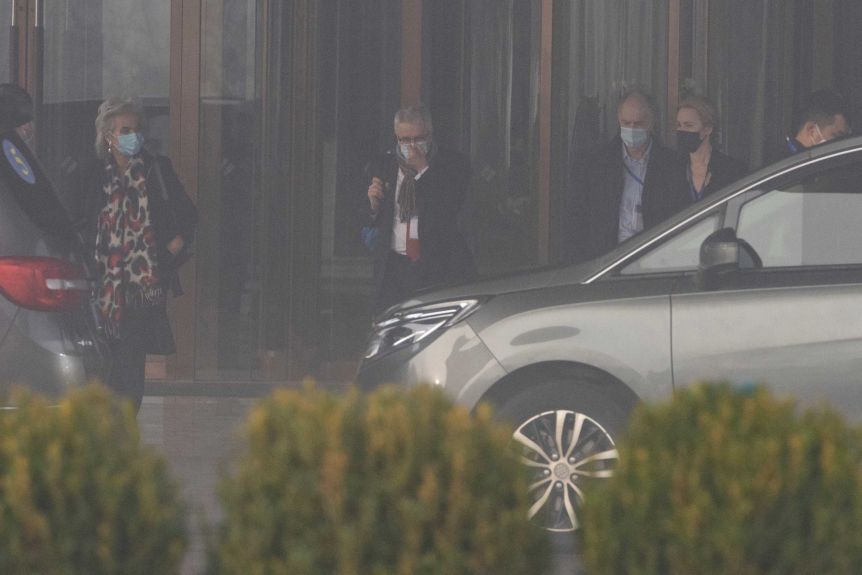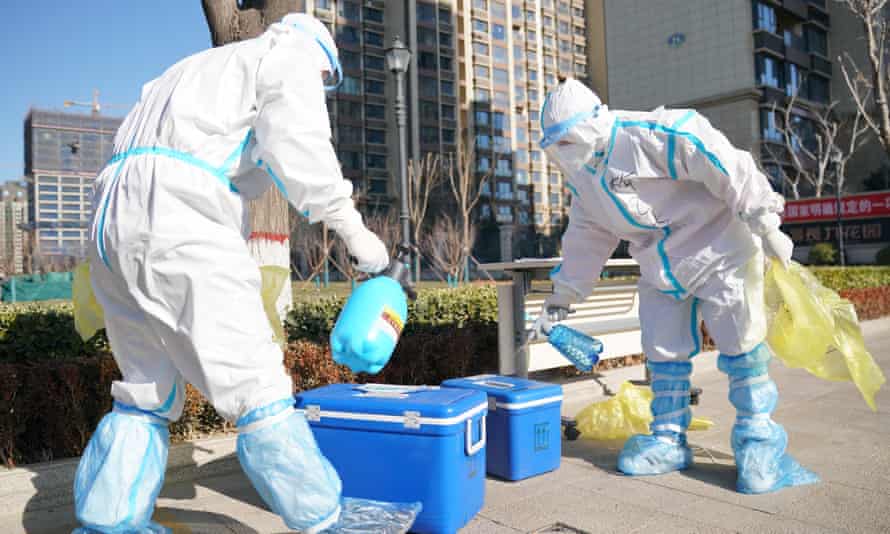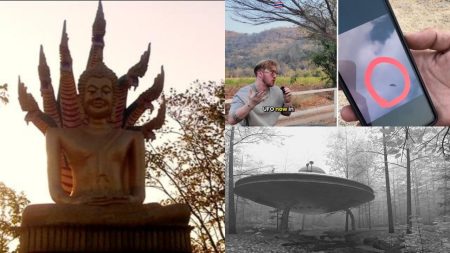World Health Organization investigators visited a research center in the Chinese city Wuhan which has been the subject of speculation about the origins of the coronavirus.

Key points:
- Wuhan Institute of Virology has built an archive of genetic information on bat coronaviruses
- This has led to claims it may have a connection to the original COVID-19 outbreak
- Journalists had no direct access to WHO team members during their visit
The visit of the WHO team to the Wuhan Institute of Virology is a highlight of their mission to collect data and find clues about the origin of the virus and its spread.
Journalists followed the team to the high security center, but as with previous visits there was no direct access to team members who have so far given few details about their fact-finding mission.
Uniformed and plainclothes security guards kept watch, but there was no sign of the protective suits the team members had worn during a visit to an animal disease research center earlier in the week.
Learn more about the coronavirus:
The Wuhan Institute, one of China’s top virus research laboratories, built an archive of genetic information on bat coronaviruses after the 2003 outbreak of severe acute respiratory syndrome (SARS).
This has led to unproven claims that it may have a connection to the initial outbreak of COVID-19 in Wuhan at the end of 2019.
China has firmly denied this possibility and has promoted theories that the virus could originate elsewhere or even have been brought into the country from abroad with imports of frozen seafood contaminated with the virus.
International scientists have categorically rejected this theory.
Counter accusations of “laboratory leak”
Journalists followed the team to the high-security facility, but as with previous visits, there was no direct access to team members. ( AP: from Han Guan )
The institute’s deputy director, Shi Zhengli, a virologist who worked with Peter Daszak, a zoologist with the WHO team mission, traced the origins of SARS that originated in China and caused the 2003 epidemic.
She has published extensively in academic journalists and has worked to debunk theories adopted by the former Trump administration and other U.S. officials that the virus is either a biological weapon or a “lab leak” from the institute.
After two weeks in quarantine, the WHO team which includes experts from 10 countries visited hospitals, research institutes and a traditional wet market linked to many of the early cases.
Their visit follows months of negotiations as China seeks to keep tight control over information about the outbreak and the investigation into its origins, possibly to avoid blame for alleged missteps in its quick response.
Confirming the origins of the virus will likely take years.
Determining the animal reservoir of an epidemic usually requires extensive research, including the collection of animal samples, genetic analyzes, and epidemiological studies.







